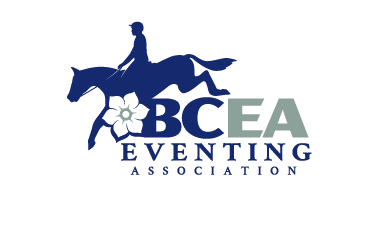Safety and Rules
Rules & Regulations
Local Division Guidelines
Under Equestrian Canada rules, organizers may hold one or more divisions under EC Bronze sanctioning as “Local Divisions” provided that the specifications for these divisions do not exceed that of the “Entry” division.
For BC, these local divisions are Pre-Entry and Starter.
The aim of the Pre-Entry and Starter levels is to make introductory eventing simple, encouraging, and enjoyable for both horse and rider.
Equestrian Canada
Rules & Regulations
EC Eventing Rules and Regulations cover sanctioned Horse Trials from Entry through Advanced divisions. Every competitor should be familiar with the rules of their sport and know how to look up information for themselves.
Two Sections of the Rule Book pertain to Eventing:
Section A: General Regulations
www.equestrian.ca/programs-services/rules
Section D: Eventing
www.equestrian.ca/programs-services/rules
FEI Rules & Regulations
FEI Eventing Rules and Regulations cover international eventing competitions from CCI* through CCI5* both Long and Short formats.
Link to FEI Eventing rules:
inside.fei.org/fei/disc/eventing/rules
Link to FEI Eventing Ranking rules:
Do you have an idea for a new rule or would like to see a rule changed or clarified?
Rule changes are accepted between Jan 1 and May 31 each year. All current EC Sport License holders may submit rule changes.
Did You Know…?
Some highlighted rule changes for 2021. Full summary is here
French Links are allowed. The center link may be a flat link but it must lie in the same plane as the rest of the bit. (Not to be confused with Dr Bristol )
For XC a Throat latch is compulsory. Micklems are still allowed.
The whip is not to be used more than TWO times (previously 3) in any one incident. Visible whip marks on a horse are ALWAYS considered excessive.
Blood on horses must be reviewed on a case by case basis by the Ground Jury. Not all cases of blood will lead to elimination and an Eventing Recorded Warning or a Warning Red Card.
For Cross Country, any addition to cheek pieces are forbidden. (sheepskin or other material)
For Show Jumping only, Leather sheepskin or other material, may be used on cheek pieces of the bridle, providing the material does not exceed three centimeters in diameter measured from the horse’s cheek.
A competitor after having knocked down a flag at an obstacle as a consequence of a run out, may ask the fence judge for the flag to be repositioned, but no time will be deducted.
Any competitor who leaves the event site after a fall without submitting to the examination required will automatically be issued and Eventing Recorded Warning for Incorrect Behavior.
Modifications to the Eventing Recorded Warning /Warning Red Card System for 2021.

